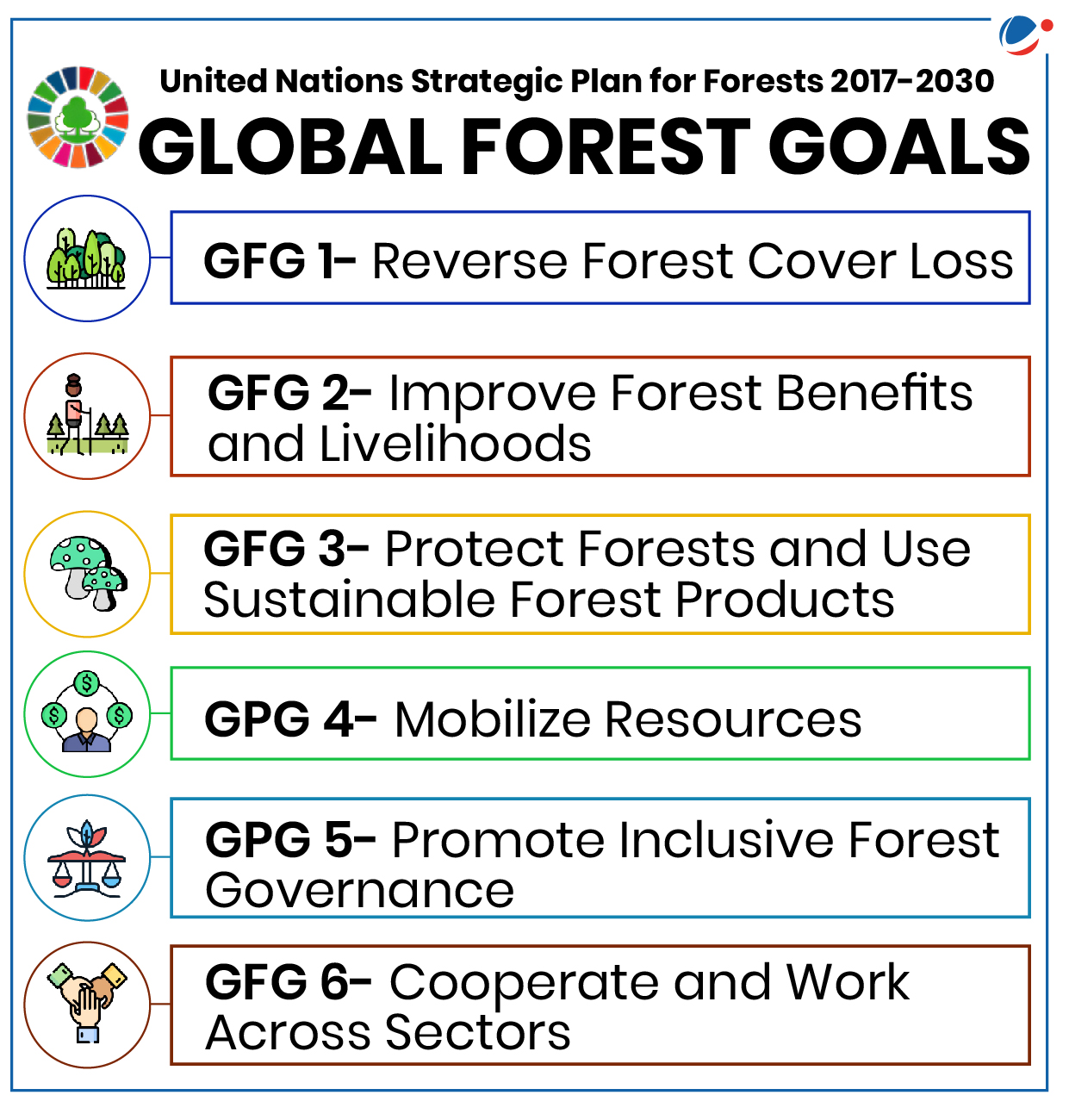Why in the news?
Recently, the 19th Session of the United Nations Forum on Forests (UNFF) under the International Arrangement on Forests (IAF) concluded with the adoption of a declaration on forest protection with a focus on People, Science, Technology and Finance.

Key takeaways of the UNFF19 meeting:
- Despite significant progress, the world is off track to achieve the Global Forest Goals by 2030.
- Members reaffirmed the UN Strategic Plan for Forests 2017-2030 (UNSPF) as a global framework for action at all levels to protect and sustainably manage all types of forests and trees outside forests.
- Need to focus on forest-based solutions to tackle the 'triple planetary crises' (Climate Change, Biodiversity and Pollution).
- Some entities have shown the way with promising initiatives like the Forest Environment Tax by Japan, the Model Forest Act Initiative (MoFAI) by UNEP and ADB and the Congo Basin Forest Partnership among others.
- India tabled its significant increase in forest cover in the past 10 years through a scientific approach to Sustainable Forest Management (SFM).
- Total forest and tree cover has increased by 2261 sq km., taking the total to 24.62% of the total geographic area. (ISFR 2019-2021 assessment)
- 17 states have more than 33% of their area under forest cover.
UN Strategic Plan for Forests under UNFF (2017-2030)The agreement on the first-ever UN Strategic Plan for Forests was forged at a special session of the UN Forum on Forests held in 2017 and provides an ambitious vision for global forests in 2030.
|
International Arrangement on Forests (IAF)
The IAF was established in 2000 as a successor to the Intergovernmental Panel on Forests (1995-97) and the Intergovernmental Forum on Forests (1997-2000).

Objectives of IAF
- Promote the management, conservation and sustainable development of all types of forests and to strengthen long-term political commitment to this end.
- Promoting implementation of sustainable forest management (SFM), in particular the implementation of the UN Forest Instrument.
- Enhancing the contribution of forests to the post-2015 development agenda.
- Fostering international cooperation, public-private partnerships and cross-sectoral cooperation.
- Strengthening forest governance frameworks and means of implementation.
5 components of the IAF
- United Nations Forum on Forests (UNFF): Established in 2000 as a functional commission of the UN Economic and Social Council (ECOSOC), it aims to promote the management, conservation, and sustainable development of all types of forests. Its functions include-
- Facilitating Sustainable Forest Management (SFM).
- Continued policy development and dialogue among governments, and international organizations.
- Strengthen political commitment to the management, conservation, and sustainable development of all types of forests.
- Collaborative Partnership on Forests (CPF): It is an innovative voluntary interagency partnership on forests, established in 2001 to help enhance the contribution of all types of forests and trees outside forests to the 2030 Agenda for Sustainable Development and other internationally agreed development goals.
- It comprises of 16 international organizations like the IUCN, CITES, FAO etc.
- The Global Forest Financing Facilitation Network (GFFFN): It is the forest financing system for the UNFF.
- UN Trust Fund: It is a fund that supports the activities of the UNFF and other components of the International Arrangement on Forests (IAF). The contributions are voluntary in nature.
- UNFF Secretariat: It is responsible for logistic preparations for UNFF-related meetings, timely preparation and dissemination of documents, as well as servicing meetings of the UNFF and its Bureau.
- The Secretariat also serves as the Secretariat for the CPF and facilitates UNFF inter-sessional activities, such as expert group meetings and country-led initiatives.







